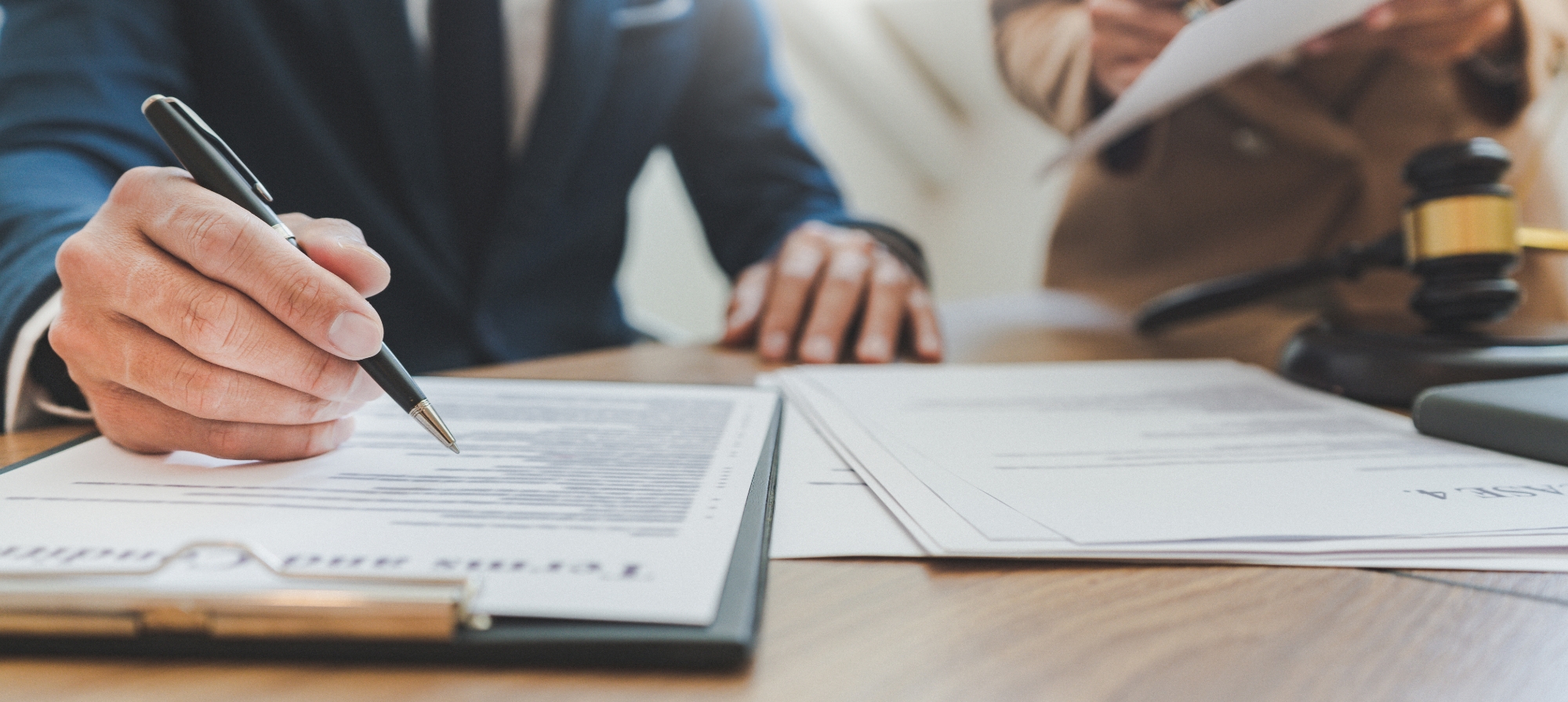“Do I have a case?”
It’s one of the first questions that we hear from just about everyone who contacts us after a personal injury accident. And while we wish we could always give people a clear yes or no answer right away, the truth is that it doesn’t always work that way.
Whether or not you have a case depends on many factors, and often can only be determined after we’ve performed a detailed investigation. However, there are a few key things we look for to help you understand your legal options and what kind of compensation you might be entitled to.
In this blog post, our lawyers break down some of the essential elements of a successful personal injury claim in Texas.
1. Was Someone Else at Fault?
The first and most basic step is figuring out who is responsible for the accident that caused your injury.
Most personal injury cases revolve around the idea of negligence. In other words, you need to be able to prove that the party (or parties) you are seeking compensation from:
- Owed you a “duty of care.” For example, drivers are obligated to care for the safety of other drivers by following the laws of the road. Trucking companies must limit the number of hours their drivers are one the road. Companies cannot make or sell dangerous or defective products. You get the idea.
- Violated that duty of care. A drunk driver hitting you after running a stop sign at a high rate of speed, for example, would be an obvious and clear example of someone who breached their duty of care to you.
RELATED: Understanding Negligence in Your Personal Injury Claim
While in many instances the fault is clear and absolute—getting rear ended by a drunk driver, for example—it isn’t always so black and white. Here are a few factors that can complicate your negligence claim.
Multiple Parties Are Involved in Your Personal Injury Case
Sometimes, more than one person contributed to your crash. This can occur in many ways:
- Multi-car pileups
- Negligent hiring or improper training (in cases involving commercial vehicles)
- Defective or dangerous parts or products contributed to the incident (product liability)
- Improper maintenance of vehicles (in commercial vehicle cases)
- Improper loading of large trucks by another company
- A bar or restaurant knowingly overserved a drunk driver
In these situations, you might have multiple personal injury claims against multiple parties. That means you will have to file insurance claims or lawsuits against each and every one of them.
Sometimes, identifying all the parties involved is a relatively easy task. Other times, it requires careful investigation and consultation with experts. However, if you suspect that your case is more than a simple two-car crash, you should immediately consult with a personal injury lawyer. They can help you navigate your claims, negotiate with the various insurance companies, and deal with all the defense lawyers.
Comparative Fault Comes Into Play
Sometimes multiple negligent parties may share fault for an accident or injury—including you. Texas uses a system called comparative negligence, which means fault can be split between two (or more) parties—and not necessarily equally.
For example, let’s say an accident occurs where you were driving 5 miles per hour over the speed limit when you entered a residential intersection. At the same time, a drunk driver was speeding towards you and ran a red light. You (arguably) contributed to the wreck, but not to the degree of the other, reckless driver.
In this case, a court might potentially hold the drunk driver 90 percent responsible for the crash and hold you responsible for the remaining 10 percent due to your own actions. Under Texas law, you would receive a 10% reduction in your compensation.
For example, suppose you had $100,000 in medical bills, lost income, and other losses due to the crash. Because you were 10% at fault, you would only receive $90,000 in a jury award.
However, in Texas, you cannot get personal injury compensation if you were more than 50% responsible for the accident that caused your injury.
RELATED: How Does Texas Deal With Contributory Negligence?
2. Did You Suffer Damages and Can You Prove It?
The second big question to answer when deciding if you have a case is whether or not you suffered recoverable damages.
For example, let’s say you’re walking in downtown San Antonio and are about to cross a street at an intersection. A driver rolls through a stop sign and pulls out in front of you. Thankfully, you stop yourself at the curb—but your heart is racing, and you’re pretty shaken up.
You can argue that the driver breached their duty of care to you and was at fault for your emotional stress. But you are relatively uninjured. After a few minutes, you move on with your day. In this case, you probably don’t have a case because you don’t have significant damages.
Here’s a quick primer on the basic kinds of damages you can claim after an accident:
- Compensatory economic damages. This would include any financial costs resulting from your injury, including costs that you will be projected to bear in the future. For example: medical bills, lost wages or reduced wage-earning capacity, physical therapy, home modifications to accommodate disability, future surgeries you are likely to require, assisted living or nursing care, and other expenses.
- Compensatory non-economic damages. These damages compensate you for pain and suffering that go beyond the scope of financial losses. While these damages are more subjective in nature, they are still important. If your accident keeps you from enjoying your favorite activities, alters your relationships with loved ones, causes emotional distress, or other emotional harm, you may be able to claim significant non-economic damages to your quality of life.
- Punitive damages. These are not meant to compensate you for your suffering, but rather to punish an at-fault party for grossly negligent behavior, and act as warning and deterrent for potential future offenders. They are not always awarded, and even when they are, there are caps restricting how large they can be.
RELATED: How Do You Calculate Pain and Suffering Compensation for Injuries?
That might seem like a lot to digest, but again, the basic idea is this: even if the other party behaved recklessly and put you in danger or caused an accident, you only have a personal injury case if you suffered meaningful damages.
Even if the other party behaved recklessly and put you in danger or caused an accident, you only have a personal injury case if you suffered meaningful damages.
RELATED: Can I Get Punitive Damages After a Car Accident in Texas?
3. What Can I Realistically Collect?
This is perhaps the most frustrating part of the process, and the one that leads to a lot of real heartbreak for innocent people.
Typically, any compensation you receive as the result of a settlement or trial verdict is going to be paid by an insurance company, rather than the individual who is held at fault.
If the parties involved are uninsured (or lack sufficient coverage), and the at-fault party has few assets (which is generally the case if they’re uninsured or underinsured), the reality is there may be very little you can collect.
Often, when the at-fault party is (or is working for) a business, like a trucking company or rideshare provider, they will carry significant liability coverage limits, so this is not an issue. But if the at-fault party is an individual motorist, the outlook can be much bleaker.
Typically, any compensation you receive as the result of a settlement or trial verdict is going to be paid by an insurance company, rather than the individual who is held at fault.
Studies suggest that potentially as many as one in five Texas drivers are not carrying any liability insurance. Plus, since the minimum liability insurance policy coverage in the state is only $30,000 per person and $60,000 per accident for injuries (plus $25,000 for property damage), it’s quite easy to significantly exceed the at-fault driver’s coverage limits for even moderate injuries, or in cases where multiple people suffer injuries from the same incident.
This is one reason why we always strongly encourage drivers to never opt out of uninsured and underinsured motorist (UM/UIM) and personal injury protection (PIP) coverage from their own insurer. Both forms of supplemental insurance can help pay for your damages after an accident.
If you are in an accident caused by an uninsured or underinsured driver (or the victim of a hit and run), you can file a claim with your own UM/UIM insurer, which then essentially takes the place of the at-fault driver’s liability coverage.
PIP provides even further protection. Since it is “no fault” coverage, it can help you cover medical expenses and lost wages right away even in cases where you were responsible, or fault hasn’t been established yet.
RELATED: What to Do If You’re Hit by an Uninsured Driver
4. Do You Still Have Time to File a Personal Injury Claim?
Texas (and every other state) set strict filing deadlines for personal injury and wrongful death lawsuits. If you wait too long after the incident, you might no longer have a case.
Typically, you must file a personal injury lawsuit within two years of the crash or injury. If you try to file a complaint (the document that initiates a lawsuit) after this deadline, the insurance company can ask the court to dismiss your claim—and the judge will likely grant their request.
There are some rare exceptions to the statute of limitations, but you should never put off consulting with a lawyer. In addition to missing your filing deadline, you could also lose evidence and make costly mistakes that damage your case.
Typically, you must file a personal injury lawsuit within two years of the crash or injury. If you try to file a complaint (the document that initiates a lawsuit) after this deadline, the insurance company can ask the court to dismiss your claim—and the judge will likely grant their request.
How a Personal Injury Lawyer Can Help You Decide If You Have a Case
If you’ve suffered a personal injury, you believe someone else was to blame, and you want to know whether or not you have a legitimate case, contact a personal injury attorney as soon as possible.
First Call and Initial Consultation
The first thing you should do is simply call our office and let us know your situation. Usually within 10-15 minutes, one of our legal professionals will let you know if we think we may be able to help you and will set up an initial free consultation. We’ll also provide you with a checklist of things to prepare and take with you to your appointment.
Then, during that initial consultation, we’ll discuss the merits of your case in more depth, go over your legal options with you, and help you make decisions about where the case should go from there.
Again, these initial calls and consultations are always completely free of charge. In fact, you will never pay anything out of pocket when working with Crosley Law. We work on contingency, meaning that you don’t owe us anything unless we help you win a verdict or settlement. Any attorney’s fees and expenses are then deducted from the resulting compensation award.
RELATED: What Should I Bring to a Meeting With an Injury Lawyer?
Investigation
If we’ve decided to move forward after the initial consultation, we’ll begin the investigation. Elements of a typical investigation might include:
- Obtaining a copy of the police report
- Obtaining statements from eyewitnesses
- Obtaining and reviewing copies of your medical records
- Visiting the scene of the accident or reviewing photographs of the accident scene, property damage, and injuries sustained.
- Speaking with expert witnesses who can help in various aspects of your case, including figuring out who is at fault, helping us evaluate the long-term economic and non-economic costs of your injuries, and conclusively linking those injuries to the crash. Examples include medical specialists, engineers, and traffic safety experts.
Remember, to build your case, we’ll need to prove several important points:
- The other party (or parties) had a duty of care to you.
- They failed in that duty, and thus were responsible for your accident.
- The accident was the cause of your injuries.
- Those injuries caused you to suffer meaningful damages.
All four points are necessary to have a case.
Getting the Compensation You Deserve
There’s another big pitfall aside from just establishing that you have a strong case. It’s making sure you get the compensation you deserve and don’t end up walking away with a personal injury settlement or verdict that is too small to provide for your long-term needs.
Insurance companies will often try to wriggle out of their full responsibility to cover your damages by offering you an initial settlement that’s far below what your case is worth. The insurance adjuster assigned to your case will be looking for any opportunity to shift blame, get you to make statements that could damage your case, and minimize what the insurance company has to pay.
And once you settle, the case is closed. You can’t go back for more if you discover the deal wasn’t quite as sweet as you first thought. Don’t take the bait; always call a personal injury lawyer first.
Taking the time to conduct a thorough investigation, get expert analysis, and estimate damages accurately is a time-consuming, complex, and often expensive process. But without taking these necessary steps, you will have no idea what your case is truly worth and will very likely end up leaving a lot of money—money you deserve and are entitled to—on the table.
And once you settle, the case is closed. You can’t go back for more if you discover the deal wasn’t quite as sweet as you first thought. Don’t take the bait; always call a personal injury lawyer first.
Injured? Talk to Crosley Law Today
When you hire a great personal injury law firm like Crosley Law, you gain the peace of mind that a team of dedicated, experienced, and thorough legal professionals is on your side.
We’d be happy to talk with you to help you figure out your next steps. Because there is a statute of limitations, and because critical evidence may disappear in the days and weeks following a crash, it is always in your best interest to seek legal advice as soon as possible.
To schedule a consultation with our team, give us a call today at 210-LAW-3000 | 210-529-3000, or complete our online consultation request form.
The content provided here is for informational purposes only and should not be construed as legal advice on any subject.









